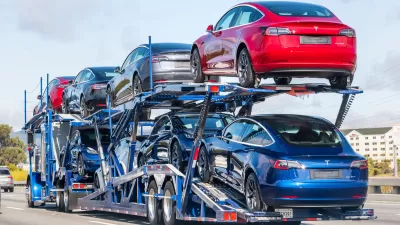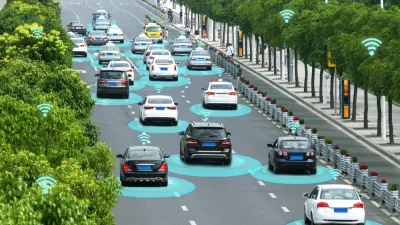The slow progress of autonomous vehicle and electric vehicle technology in gaining widespread traction in the transportation market is casting doubt on the ambitious statements of a few years prior.

Jeffrey Rothfeder writes a long-read on a lack of progress in the autonomous vehicle industry, which reveals plenty of reason for skepticism about the past promises from industry leaders about the pace of change in the transportation sector.
Evidence for skepticism takes many forms, like court documents unsealed in 2017 related to a lawsuit filed against the ride-sharing company Waymo, Google’s self-driving car unit. "Simply put, Uber—and, as it turns out, many other automobile manufacturers—have been wildly overpromising," reports Rothfeder.
Many of Uber's projections were made without any data to back up their aggressive timeline. Assumptions and estimates deployed, not projections that have proven accurate.
After the court documents were unsealed, Uber officials have taken a more cautious approach. Earlier this month, "the company’s CEO Dara Khosrowshahi said at an Economic Club meeting in Washington, DC, that it will take more than 50 years for all Uber cars to be driverless, a lifetime away," writes Rothfeder.
Rothfeder finds many more examples of the same kind of exuberance in the electric vehicle realm. The reality has proven wildly underwhelming compared to projects. For instance, "in 2010, J.D. Power and Associates predicted that within a decade, global hybrid and EV annual sales would top five million units. The EV segment is nowhere near that goal and, if anything, is retrenching.
There is a lot more detail, evidence, and anecdote provided in this long read. The business of transportation technology research and development is changing as the challenges of delivering widespread, systematic change in mobility become more obvious than the over exuberance of tech "visionaries."
FULL STORY: For years, automakers wildly overpromised on self-driving cars and electric vehicles—what now?

Study: Maui’s Plan to Convert Vacation Rentals to Long-Term Housing Could Cause Nearly $1 Billion Economic Loss
The plan would reduce visitor accommodation by 25,% resulting in 1,900 jobs lost.

North Texas Transit Leaders Tout Benefits of TOD for Growing Region
At a summit focused on transit-oriented development, policymakers discussed how North Texas’ expanded light rail system can serve as a tool for economic growth.

Why Should We Subsidize Public Transportation?
Many public transit agencies face financial stress due to rising costs, declining fare revenue, and declining subsidies. Transit advocates must provide a strong business case for increasing public transit funding.

How to Make US Trains Faster
Changes to boarding platforms and a switch to electric trains could improve U.S. passenger rail service without the added cost of high-speed rail.

Columbia’s Revitalized ‘Loop’ Is a Hub for Local Entrepreneurs
A focus on small businesses is helping a commercial corridor in Columbia, Missouri thrive.

Invasive Insect Threatens Minnesota’s Ash Forests
The Emerald Ash Borer is a rapidly spreading invasive pest threatening Minnesota’s ash trees, and homeowners are encouraged to plant diverse replacement species, avoid moving ash firewood, and monitor for signs of infestation.
Urban Design for Planners 1: Software Tools
This six-course series explores essential urban design concepts using open source software and equips planners with the tools they need to participate fully in the urban design process.
Planning for Universal Design
Learn the tools for implementing Universal Design in planning regulations.
Ascent Environmental
Borough of Carlisle
Institute for Housing and Urban Development Studies (IHS)
City of Grandview
Harvard GSD Executive Education
Toledo-Lucas County Plan Commissions
Salt Lake City
NYU Wagner Graduate School of Public Service





























